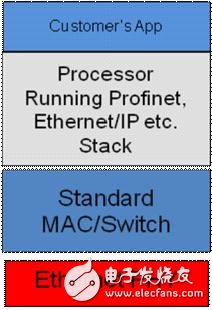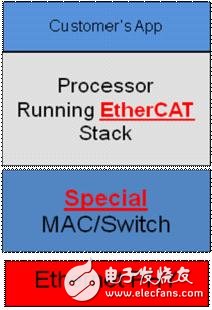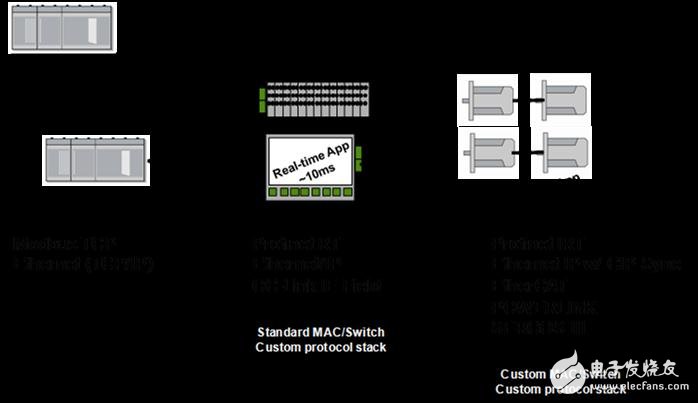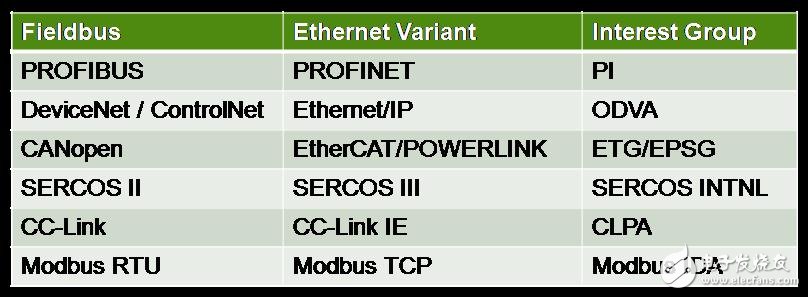For various reasons, industrial Ethernet has become the mainstream technology for factory automation. What has not attracted the same attention is that this communication technology needs to be implemented in the supplier system. This article introduces various options for implementing industrial Ethernet from the perspective of factory automation vendors developing slave systems, such as slave systems such as I / O modules and drives.
The problems faced by these OEMs can start with the viewing system architecture. The supplier does not design the slave system for a certain protocol, but must support any standard that can be implemented in the factory. It cannot specify a certain protocol, so the system must adapt to any protocol.
The new standards for the slave protocol developed also have unique hardware characteristics, and they cannot be implemented using standard MACs. These all directly affect the choice of implementation platform.
Introduction to Ethernet
In the beginning, Ethernet—the initial Ethernet at 10 Mbps, Fast Ethernet at 100 Mbps, and Gigabit Ethernet at 1 Gbps—transmitted signals between devices on a shared medium, all of which were not suitable for industrial applications. With the advent of Fast Ethernet (100 Mbps), its switching mode supports full-duplex functionality, meaning that a point-to-point link can be built between the two devices, making Ethernet available for most industrial applications.
However, all industrial Ethernet protocols require a certain degree of judgment, which is traditionally solved by using a software protocol stack. Some new protocols have begun to use special MAC structures to achieve better latency. Figure 1 shows the structure of some industrial Ethernet protocols.
Speed ​​requirements (or delay)
Factory automation systems have real-time response requirements. What is "real time"? The answer depends on the type of application. Sometimes, it is measured in hundreds of milliseconds, and sometimes it is measured in microseconds. There are different design methods that enable communication protocols to meet different delay requirements.


Figure 1: Industrial Ethernet protocol architecture
As shown in Figure 1, the PHY layer is usually an independent analog device. However, other functions can be implemented in the digital logic device, and the processor runs the software for the protocol stack and customized applications.
All industrial Ethernet protocols require special software stacks, and some new protocols use unique non-standard designs for MAC and switching.
EtherCAT and Powerlink are two newer protocols that require special MAC design. In particular, EtherCAT uses an innovative method to encapsulate more data packets in an Ethernet frame. The data of multiple slave devices are encapsulated into an Ethernet frame. When a slave device reads an Ethernet frame, it must extract the intrinsic meaning of the data packet for itself while ignoring other information—more importantly, it must be able to complete this job “at any timeâ€. When many slave devices are connected, the minimum delay requirements must also be met. Typical applications are motion control and multi-axis robot drive.
The good side of this protocol is that it will cause a frame delay instead of 256 frame delay (if you are the 256th slave device on the network).
In order to support the selected protocol, the MAC design in the slave device is different from the traditional Ethernet MAC and is non-standard, requiring a special design of FPGA or ASIC. Figure 2 shows how different real-time requirements lead to different architectures of communication protocol standards.
From the perspective of system design, if you must support standard MAC implementation and special implementation, then the design should include MAC design or be hardware programmable.

Figure 2: Different real-time requirements lead to different implementations
Key trends affect system design
The first development trend of drivers and I / O modules (typical slave devices in factory automation) is the deep embedding of communication functions, which is caused by factors such as reduced system cost, reduced form factor, and lower power budget.
In the past, customers spent hundreds of dollars to purchase commercial communication modules and then added them to the driver modules. This type of module is not cost-effective, and it is not suitable for small-format package drive design.
Another alternative is to include a separate ASSP dedicated to implementing communication functions. Because different customers will use different industrial Ethernet standards, this ASSP may be over-designed to support multiple protocols.
However, suppliers hope to integrate all their digital driver functions into a single silicon chip, requiring that the communication protocol function scale is not large and can be implemented as an integral part of the entire "chip driver" design.
Figure 3 shows the transformation of industrial Ethernet functions.

Figure 3: From module to device to chip integration function
The second trend is the rapid development of industrial Ethernet standards. Similar to the fieldbus protocol, there are many types of industrial Ethernet protocols, and most importantly, these standards have not been merged in the market.
Drive system suppliers must be able to support 6 to 8 standards before they can sell their products to different factories around the world. For example, if you want to sell your drive equipment in Asia and Europe at the same time, and adapt to both EtherCAT and Ethernet Powerlink, then you need:
· Design, develop, and maintain two sets of drive designs
or
· Include ASSP to support multiple protocols-hope the protocol will not change
or
· Use a programmable platform
Table 1 lists some competing Ethernet standards popular in the world.

Table 1: Competing Ethernet standards emerge, based on the underlying fieldbus protocol
In the past, when the industrial Ethernet standard used a standard MAC / switch, it was easy to use MPU for communication. If you need to support the new standard, you only need to exchange the protocol stack (software). However, as discussed earlier, many new standards require special MAC implementations.
Obviously, when dealing with these new standards, it is not enough to standardize the communication protocol using standard Ethernet MAC and switches on the standard MPU.
Some MPU vendors have developed innovative methods, such as developing custom microcode for dedicated embedded processors to emulate non-standard MACs. However, writing a custom RISC engine custom microcode to emulate a hardware MAC is not the most straightforward and simple way to implement or update the logic design.
Protocols that require special MAC implementations usually use custom hardware methods, depending on the output and the required price point and use ASIC or FPGA. Moreover, MAC design is always possible to change with the development of standards. To ensure that your design will not become obsolete in the future, the programmable method is the safest.
Another consideration is the possibility of moving towards Gigabit Ethernet. Because almost all FPGAs support Gigabit Ethernet, even if the standard begins to develop to a rate higher than 1 Gbps, a well-thought-out system design also requires new FPGA programming files to support the development of such standards.
Implementing Industrial Ethernet with deeply embedded functions in a programmable architecture not only enables you to flexibly support multiple protocols with the same hardware, but also benefits from a highly integrated design—power consumption, cost, and form factor packaging.
Take a deep breath, close your eyes, the world has the freshest oxygen ... Yu Quan's "Deep Breath" is well known to us, but as the environmental problems become more and more serious, the haze sky also increases, PM2.5 PM10 and so on Vocabulary has also been mentioned more and more, and air purifiers have quickly become popular on the market with this "air quality" trend. Along with this, the air-clean brand has sprung up, and various technologies are dazzling. Which ones are indeed effective and which are just tasteless propaganda? How does the Air Purifier bother us to get rid of pollution? And look at the editors for you.
Analysis of air purifier
The critical value of PM2.5 content is 75 μg / m3
The pollutants in the air mainly include soot, total suspended particulates, inhalable particulates (PM2.5) and fine particulates (PM10). The smaller the diameter of the particulates, the deeper the part that can enter the respiratory tract. 10 micron diameter particles It is deposited in the upper respiratory tract, and particles below 2 microns can penetrate 100% into the bronchiole and alveoli.
Air purifier Air Cleaner Home air purifeir sales increased by 90.5% compared with last year
According to a report recently released by the China Electronics and Information Industry Development Institute, due to the haze weather, air purifiers have become the most concerned home appliance products, with sales of nearly 2.4 million units nationwide last year, a year-on-year increase of 90.5%; retail The amount reached 5.6 billion yuan, a year-on-year increase of 105.9%.
HEPA filter needs to be replaced
The filter of the air purifier is the same as the filter of the water purifier, and it is not effective for a long time. After long-term use, the accumulation of dust on the surface of the filter will also cause the filter to gradually fail. Therefore, when the haze is more serious, the non-washable HEPA filter needs to be replaced every three months.
Negative Air Purifier,Negative Air Cleaner, Air Purifier Manufacturer in China
Ningbo Zhe Kai Electric Appliance Co.,Ltd , https://www.cnairpurifiers.com